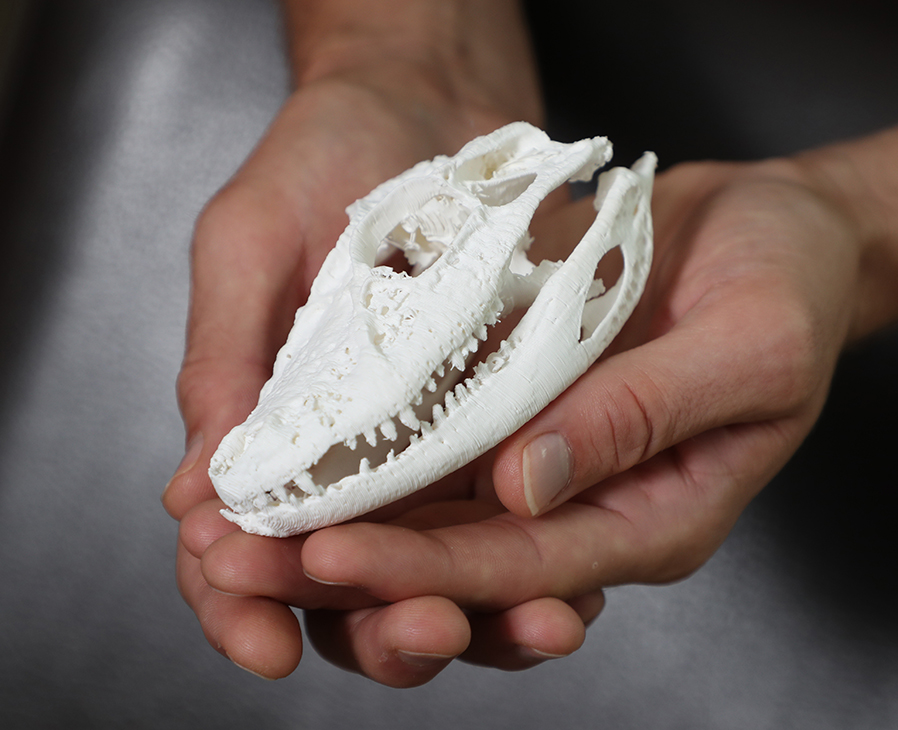
OSU-CHS ‘natural fit’ for paleontology student Forrest LaFleur
Wednesday, September 7, 2022
Media Contact: Sara Plummer | Communications Coordinator | 918-561-1282 | sara.plummer@okstate.edu
OSU Center for Health Sciences’ Anatomy and Vertebrate Paleontology student Forrest LaFleur spends more time in front of a computer than out at dig sites.
“Nowadays, the majority of paleontology work isn’t field work. Used to be you just looked for big bones and fossils, now we’re looking for tiny fossils,” said LaFleur, who has taken part in field work at Black Mesa in Oklahoma, including this past summer. “Fossils from the field can take years to evaluate and then study.”

Technology has really changed the field of paleontology. Fossils are now scanned using advanced technology that allows paleontologists to look more closely at the surface and even inside the fossils to study structure and composition.
LaFleur is studying the neural anatomy of prehistoric crocodylia, the ancient ancestors of modern day crocodiles and alligators. Species of crocodiles have small dark dots along their jaws called pits that sense changes in water pressure.
“They live in murky water so they’re eyesight isn’t beneficial,” LaFleur said, so sensing changes in water pressure help crocodiles sense prey in the water. “It also senses heat and pH. It can tell them ‘I need to bask now.’”
LaFleur is studying these pit sensors in prehistoric crocodylia, many of which were terrestrial, meaning they lived solely on land. There were also aquatic crocodiles that lived only in the water, and now crocodiles are semi-aquatic.
“Crocodylia used to be terrestrial, they hunted on land and now they’re primarily in the water and are semi-aquatic,” he said. “I’m looking at how they evolved over time and how that neural sense evolved.”
In addition to his research, LaFleur is also a teaching assistant for anatomy courses.
“I’ve always had an interest in medicine as well. OSU-CHS seemed like a natural fit because it had both. I could teach human anatomy but also pursue research,” he said.
I’ve always had an interest in medicine as well. OSU-CHS seemed like a natural fit
because it had both. I could teach human anatomy but also pursue research.
LaFleur is serving as the graduate student representative on the OSU-CHS Alumni Board.
“I get to meet people who know a lot more than me; they've been where I am and now they’re leaders,” he said. “It also allows me to see more of the medical side of things.”
LaFleur is also vice president of the Biomedical Sciences Graduate Student Association and national liaison for the Society for the Advancement of Chicanos/Hispanics and Native Americans in Science.
“I really have always been interested in teaching and outreach and figuring out how things work. This gives me a lot of teaching and outreach opportunities,” he said of being part of student organizations. “I can get hands-on experience with a lot of the students as well as administration, to make sure the graduate student body is being heard by administration.”
